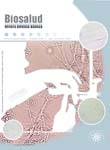Authors
Abstract
Background: the collection process for blood sampling is a very important factor that can influence the final results of some laboratory tests. The acylcarnitine determinations in blood are usually used for diagnosis and follow up of patients suffering certain inherited metabolic illnesses. Objective: this study analyzed the possible influence of the type of anticoagulant used in blood sampling on the acylcarnitine profile. Methodology: blood and plasma samples were collected using anticoagulants such as: lithium heparin, potassium EDTA, sodium fluoride-potassium oxalate, and sodium citrate. Samples were also collected without the use of anticoagulants. Acylcarnitine levels were assessed for each sample via tandem mass spectrometry. Results: no significant differences were found among the anticoagulant used. Conclusion: the type of anticoagulant has no effect on the acylcarnitine determination on blood or plasma. For this type of analysis any of the above mentioned anticoagulants can be used. Abbreviations: ESI-MS/MS, electrospray injection tandem mass spectrometry; IEM, innate errors of metabolism.
References
Stevens RD, Hillman SL, Worthy S, Sanders D, Millington DS. Assay for free and total carnitine in human plasma using tandem mass spectrometry. Clin Chem 2000;46(5):727-9.
Kodo N, Millington DS, Norwood DL, Roe CR. Quantitative assay of free and total carnitine using tandem mass spectrometry. Clin Chim Acta 1990 Jan 31;186(3):383-90.
Osorio JH, Pourfarzam M. Plasma free and total carnitine measured in children by tandem mass spectrometry. Braz J Med Biol Res 2002;35(11):1265-71.
Osorio JH, Pourfarzam M. Determination of normal acylcarnitine levels in a healthy pediatric population as a diagnostic tool in inherited errors of mitochondrial fatty acid beta-oxidation. An Pediatr (Barc) 2007;67(6):548-52.
Lepage N, Aucoin S. Measurement of plasma/serum acylcarnitines using tandem mass spectrometry. Methods Mol Biol 2010;603:9-25.
Osorio JH, Pourfarzam M. Hydrolysis of acylcarnitines during measurement in blood and plasma by tandem mass spectrometry. Acta Bioquim Clin Latinoam 2010;44(2):15-20.
Holub M, Tuschl K, Ratschmann R, Strnadová KA , Mühl A , Heinze G, et al. Influence of hematocrit and localisation of punch in dried blood spots on levels of amino acids and acylcarnitines measured by tandem mass spectrometry. Clin Chim Acta 2006; 373:27–31.
Sewell AC. Methods of carnitine analysis. In: Seim H, Löster H, editors. Carnitine-Pathobiochemical Basics and Clinical Applications. Bochum: Ponte Press 1996: 73-84.
Schoderbeck M, Auer B, Legenstein E, Genger H, et al. Pregnancy-related changes of carnitine and acylcarnitine concentrations of plasma and erythrocytes. J Perinat Med 1995;23:477-85.
Mancinelli A, Iannoni E, Calvani M. Effect of temperature on the stability of long-chain acylcarnitines in human blood prior to plasma separation. Clin Chim Acta 2007; 375:169-170.

 PDF
PDF
 FLIP
FLIP














